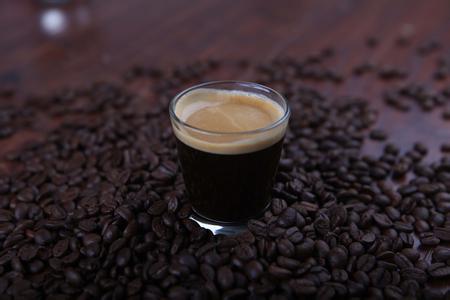Flavor description of coffee beans in Papua New Guinea Variety introduction
Papua New Guinea coffee beans flavor description taste treatment variety introduction
Papua New Guinea is a refreshing and elegant beauty. Not only is the bean body beautiful, but the flavor is also very beautiful and exquisite. As you can see on the map, Papua New Guinea borders Indonesia, but it lacks the rich, complex, spicy qualities of Indonesia's mantenin. On the contrary, Papua New Guinea's flavors are more balanced and clean. Because coffee in this country is generally planted in the highland of 1300~1800 meters above sea level, its unique volcanic rock soil and abundant rainfall create excellent natural conditions for the growth of coffee; and because the local coffee variety is introduced from Blue Mountain Coffee of Jamaica, belonging to iron pickup species. Coffee beans are basically washed to make them taste better and cleaner. Innate variety advantage coupled with the excellent growth environment, naturally there is a high quality coffee. In addition. The vast majority of coffee in Papua New Guinea is organic coffee. Due to inconvenient transportation, no railway transportation, and no perfect transportation network, the overall economy is poor, and coffee farmers have no conditions to buy fertilizer. The inadequacy of production and transportation conditions has contributed to this characteristic of organic coffee in the country.
(1) Flavor characteristics
Robusta coffee, commonly known as thick beans, usually has a plain, rigid flavor. The flavor difference between different regions and different climates is not too big. When it is not roasted, it smells like raw peanuts. After roasting, it usually tastes between wheat tea flavor (medium and light roasting) and rubber tire flavor (deep roasting). It is difficult to show detailed flavor.
(2) Market value and use
Robusta coffee is usually used for instant coffee and canned coffee because of its low cost. A few of the better quality Robusta coffees are also used in blending (mixing with Arabica coffee) out of espresso beans. In addition, Robusta coffee contains about twice as much caffeine as Arabica coffee, which is why drinking canned coffee is more likely to cause palpitations and insomnia.
Coffee Liberica (Liberia)
Lowland forest native to Liberia on west coast of Africa, widely cultivated in tropical lowlands for evergreen trees up to 10 m tall with spreading branches. Leaves thickly leathery, large, elliptic, obovate-elliptic. White, less fruit, generally only 3-6. The fruit is large, pale red when ripe, hard and thick in pericarp and flesh. Taproot thick and long, drought resistance, wind resistance, cold resistance is strong, but disease resistance is weak, most susceptible to leaf rust. The product tastes strong and hot, irritating and of poor quality. A small number of species are cultivated in Hainan Island, China.

Important Notice :
前街咖啡 FrontStreet Coffee has moved to new addredd:
FrontStreet Coffee Address: 315,Donghua East Road,GuangZhou
Tel:020 38364473
- Prev

Where do geisha coffee beans come from?-introduction to the origin and varieties of coffee beans
Where do geisha coffee beans come from? the geisha of the Emerald Manor has become a fantasy product in the coffee industry. Its flower scent is like fireworks, blooming in the mouth during drinking, with juice like lemon, citrus and strawberry, making it look like juice rather than coffee. A geisha coffee fan once said: what kind of coffee can be as invincible as a geisha?
- Next

The best time to grind coffee beans-manual coffee grinder brand
The best time to grind coffee beans-manual coffee grinder brand. Precautions for grinding coffee beans (1) the friction heat should be suppressed to a minimum (because the heat will volatilize the aromatic ingredients). (2) whether the size of the particles is uniform or not (if the particles are uneven, the concentration will be uneven). Taking this into consideration, if you grind coffee beans at home, you should rotate them gently if you do it manually.
Related
- Guji coffee producing area of Guji, Ethiopia: Humbela, Shakiso, Wulaga
- What is the most expensive variety of Qiloso in BOP multi-variety group?
- How to store the coffee beans bought home?
- Why are Yemeni coffee beans so rare now?
- Ethiopian Sidamo all Red Fruit Sun Sun Santa Vini Coffee beans
- SOE is mostly sour? What does it mean? Is it a single bean? what's the difference between it and Italian blending?
- Is Italian coffee beans suitable for making hand-brewed coffee?
- How to choose coffee beans when making cold coffee? What kind of coffee beans are suitable for making cold coffee?
- Just entered the pit to make coffee, what kind of coffee beans should be chosen?
- Can only Japan buy real Blue Mountain Coffee? What are authentic Jamaican Blue Mountain coffee beans?

